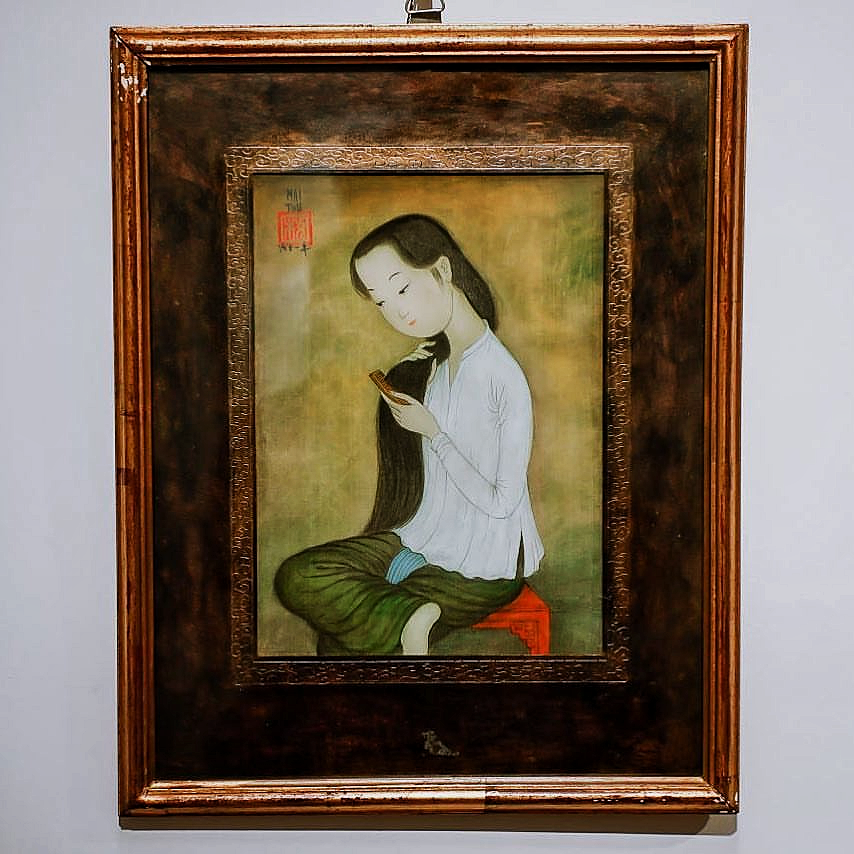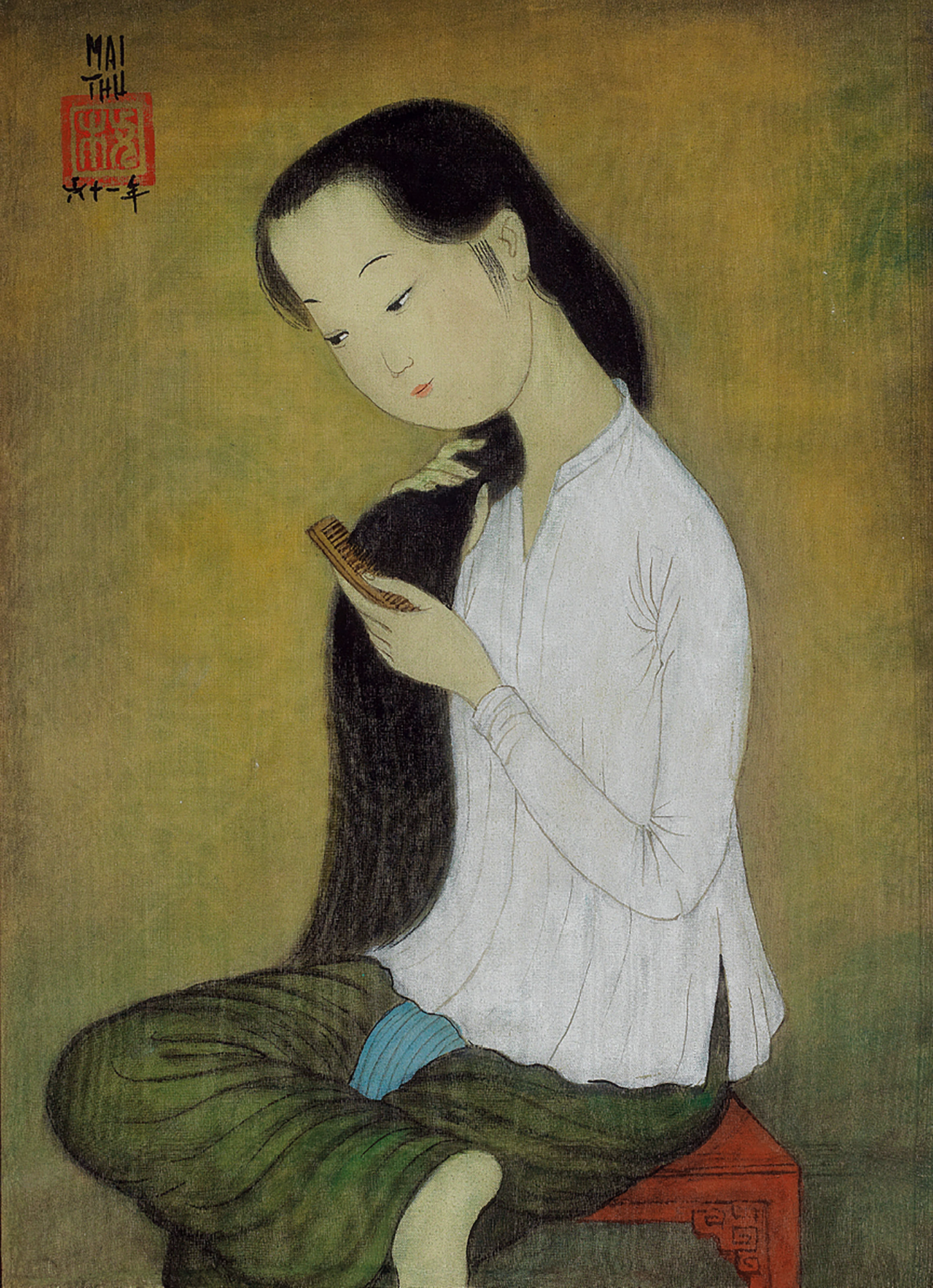
Mai Trung Thu (Vietnam/France, 1906-1980)
Jeune Fille Peignant Les Cheveux (Young Girl Combing Hair)
signed 'MAI THU' and dated in Chinese (upper left); signed again with artist's monogram and titled and dated 'jeune fille peignant les cheveux 1961' (on the reverse)
one seal of the artist
ink and gouache on silk
25×18 cm. (9 7/8 ×7 1/8 in.)
Painted in 1961

Vietnamese painting shares similar qualities yet is still distinctively different to Chinese painting. This significant art movement is borne out of a creation between an extremely beneficial association between a French project: the Hanoi School of Fine Art, created by Victor Tardieu in 1924, and a generation of highly talented young Vietnamese artists eager to learn and forge their own artistic journey and paths.
Christie's is proud to present six important artworks from four major artists that illustrate beautifully and honour one of the great currents in modern Asian visual art.
Historically after Sanyu and Foujita - but before Zao Wou-ki and Chu Teh Chun - Le Pho, Mai Thu and Vu Cao Dam, all graduates of the Hanoi School of Fine Art, made a journey to Paris, France, at different points in the 1930s, mirroring the migration of artists to one of the centres of the art world then. They decided to stay on, living and absorbing the ambient culture, and shared their unique and pioneering experiences, which are expressed through very original visual productions of the century.
Le Pho's works presented here can be dated to his Findlay period (the name of the American gallery which got him and Vu Cao Dam to sign a contract of quasi-exclusivity starting in 1963): the artworks painted in France were specifically destined to a public audience of American collectors. The vivacious tones and lines characterize these oils on canvas, as it can be seen in the beautiful Deux Femmes Dans le Jardin (lot 203) and Peony Roses (lot 204). In fact, Le Pho himself told me that he would only paint freshly cut flowers placed in a vase, as if their fragrant smell and perfume was an essential element of their representation. Also, flowers and the beautiful depictions of women were two of the painter's great passions.
Mai Thu remained the most intrinsically Vietnamese of the four painters. From 1937, he specialized in his wonderful gouaches and inks on silk to express feminine grace, which were his favourite representation. Jeune Fille à l'éventail (Young Girl with a Fan) (lot 201) and Jeune Fille Peignant Les Cheveux (Young Girl Combing Hair) (lot 202) are two excellent examples from the artist. It should be noted that from the 1950s, in addition to his paintings the artist dedicated more attention into the personalised making of the frames, as a way of enhancing and completing his artwork.
Throughout his life, Vu Cao Dam was a great admirer of a love poem, the Kim-Van-Kieu (1820) written by Nguyen Du, which was seen as a cantor the Vietnamese soul. Even if the identification is not immediate, it is eventually clear in Le Rêve (The Dream) (lot 205) that Kim is dreaming of Kieu in a hushed atmosphere of earlier times.
Lady Carrying Flowers (lot 206) by Nguyen Trung is an unusual and very rare large size by the artist. Nguyen Trung was trained in the South at the Gia Dinh Fine Art School (created by the French in 1913). He continuously opposed the symbolism and the myth of socialist realism by persevering in his representation of the Vietnamese Woman in her traditional ao dai. It is in this deliberate chosen and courageous inner exile that he developed his major art.
Vietnamese painters are traveller painters, using paintings as a medium of storytelling, asking poignant questions with an awareness of the beauty of the everyday.
Jean-François Hubert
Senior Expert, Vietnamese Art










